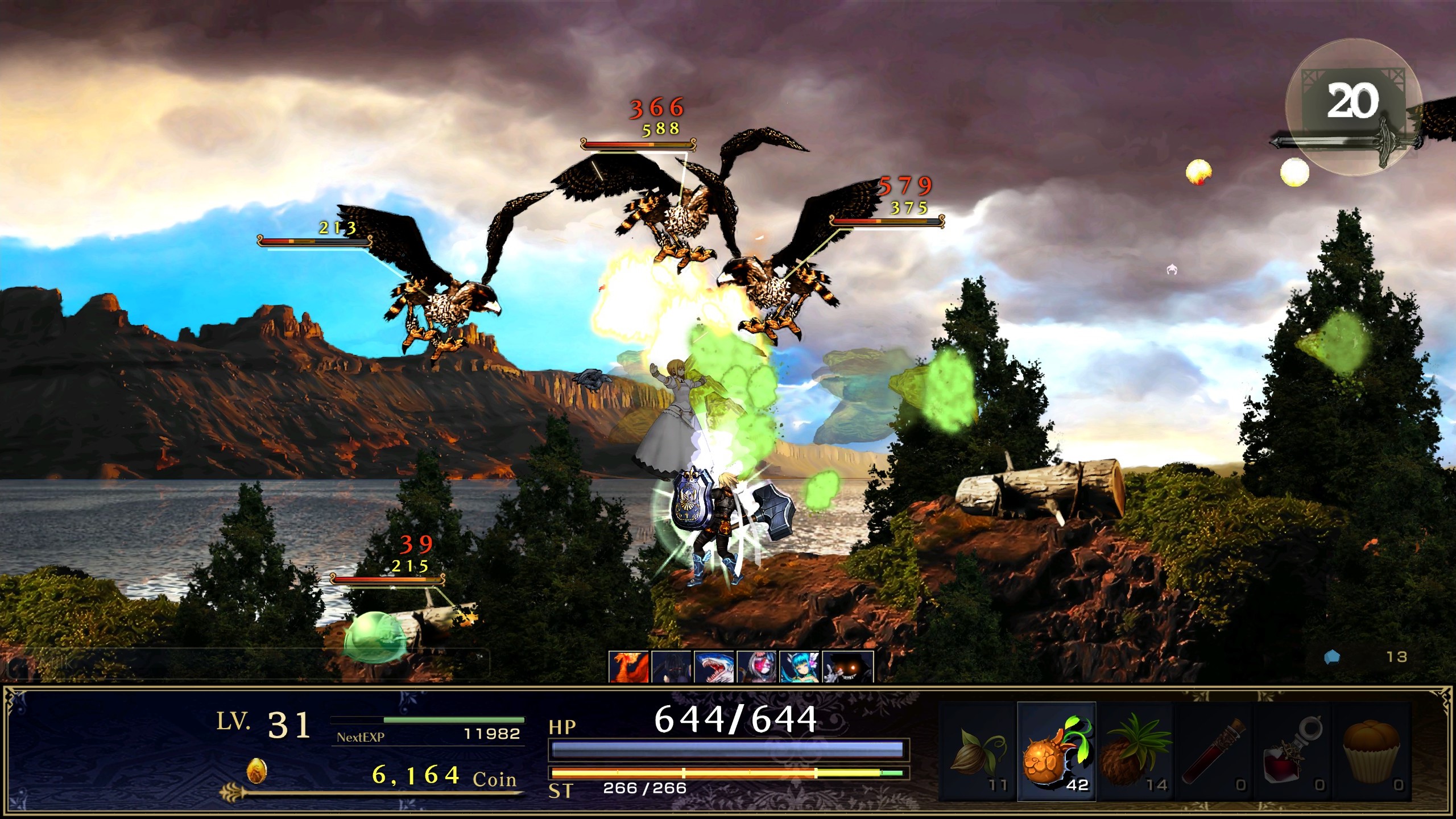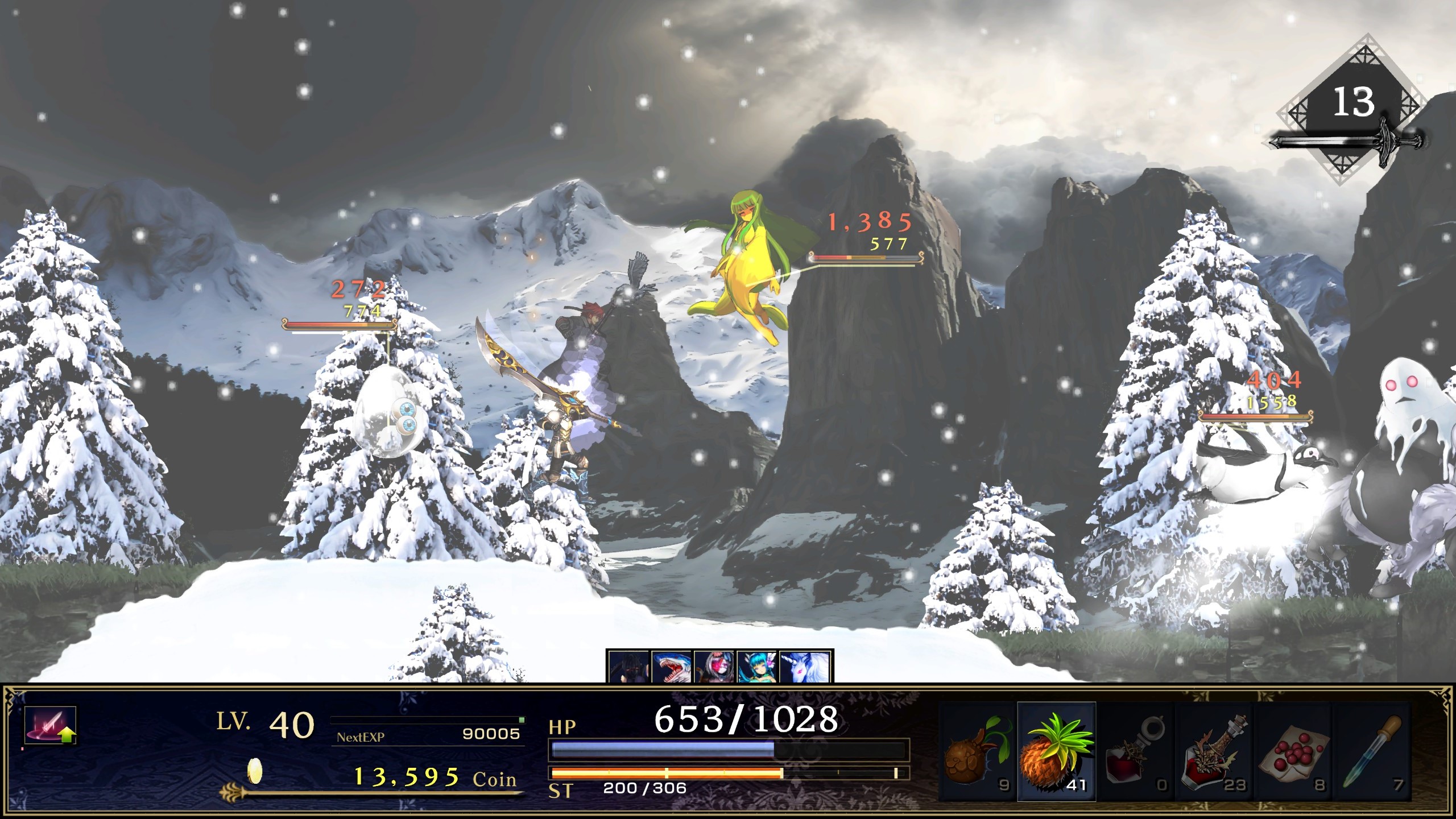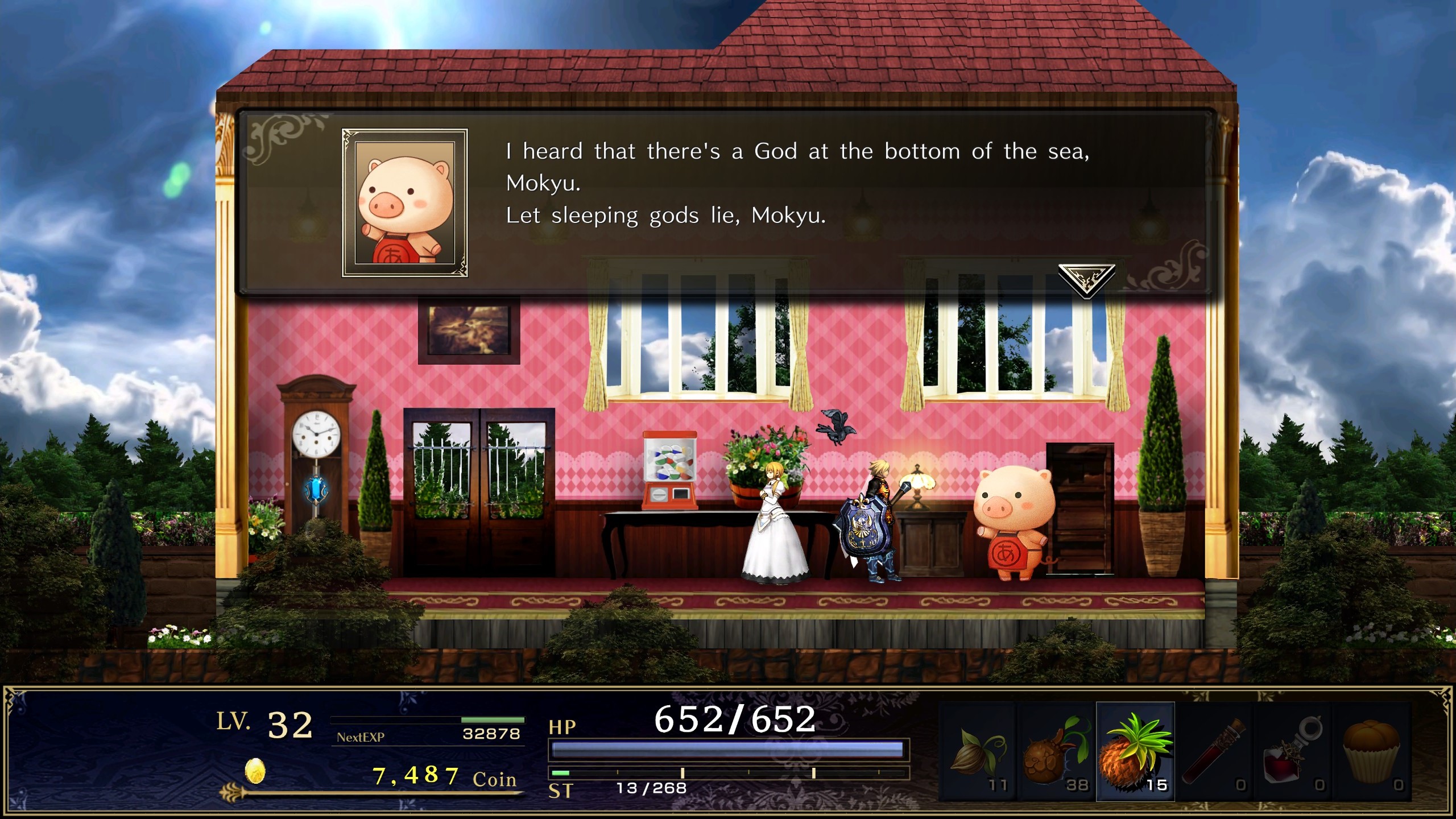This JRPG platformer's amateurish art hides one of 2022's best and wildest sleeper hits
Astlibra Revision looks bizarre, but when you play it, you'll see why it's become a huge hit on Steam.

You shouldn’t judge a book by its cover or a game by its sprites, but I’ll admit that I initially overlooked Astlibra Revision when it launched in mid-October. The Steam page for this platformer action-JRPG by a Japanese solo developer boasts over fifteen years of development time, but looks like some sort of mad fantasy clipart collage. Even its most fetching screenshots are a confusing clash of mismatched art from different sources, poorly cropped images and badly tiled terrain.
And yet right now it’s sitting at over 5000 Steam user reviews, almost all positive. A hundred more roll in every day—huge numbers for an unknown Japanese indie. Between the storefront buzz and a few people I follow on Twitter singing its praises, I took the plunge. I have now played around forty hours, enjoyed every one of them, and I’m not done yet because it is a nigh-endless well of surprises.
This might be one of the best games I’ve played this year. I think I may even like the art now, too. What's happening?
Let’s address the oddly parallaxed elephant in the room first—much (although not all) of Astlibra’s art and music appears to have come from cheap or free libraries, seemingly thrown together without concern for cohesion. After Astlibra made a strong impression with an early demo release, Vanillaware artist Shigatake joined to contribute art and help improve the look of the game, hence the ‘revision’ part of the title. If anything, the presence of his and some other contributors' (admittedly impressive) sprite-work makes the disjointed look all the more obvious.
And yet I can’t help but love Astlibra’s amateur look. It grew on me, perhaps because you can feel the intent behind every choice—even without art to perfectly fit every situation, developer Keizo’s approximations are evocative in the same way as an ASCII roguelike. You can see what it’s meant to represent, and the mind fills in the rest. Plus, it’s not unheard of for Japanese indies with limited artistic skills to produce big hits; see the all-conquering Touhou project or visual novels like Higurashi.
Worshipping false Adols
Under the strangely sourced sprites, Astlibra is a tribute to a largely forgotten breed of platform RPG. While modern metroidvanias are similar in some regards, Astlibra feels more like a throwback to the late '80s and early '90s, when the Japanese PC games industry was booming and studios like Falcom ruled with games like Wanderers From Ys. A hero with sword and shield standing atop a chunky status bar, exploring a side-scrolling world of peril and adventure.
While intuitive enough to fans of metroidvanias, this is a subtly different experience, taking equal notes from Falcom and similar retro classics, but also Vanillaware hack n’ slashers like Odin Sphere and Muramasa. Astlibra is broken up into a series of episodic adventures, each one a small self-contained world with a town and its people with their own problems and secrets. While you can backtrack freely to past regions, each area is simple and memorable enough to not need a map. Which is good, as there is none.
The biggest gaming news, reviews and hardware deals
Keep up to date with the most important stories and the best deals, as picked by the PC Gamer team.
The soundtrack also channels Falcom in the best way. Anyone familiar with the Ys series knows just how incredibly high-energy their music is, awash with soaring guitar-led themes of high adventure. Astlibra’s enormous soundtrack draws on dozens of (fully credited) sources, and even if the genre and style changes with whiplash-inducing frequency, it always matches the tone of the scene from orchestral grandeur to cartoon whimsy. Perhaps it speaks to Keizo’s skill as a DJ, but somehow a vocal drum n’ bass track perfectly fits a high stakes bullet hell boss battle. It’s musical alchemy and I love it, fully and earnestly.
Buoyed by the music, the action hits a lot of high notes, too. Much like the Ys games (especially modern ones), Astlibra’s action moves at breakneck pace. You’re rushing from one fight to the next, battering swarms of monsters, maintaining damage-boosting triple digit combo chains punctuated with violence-fueled spells performed with simple fighting game inputs. It’s fast, and on hard mode or above, very high stakes. Almost every enemy can tear huge chunks off your health bar, forcing reliance on snap blocks, parries and the moment of invulnerability after casting a spell. It’s a complex dance.

The dozens of hours of combat are sustained by a similarly complex, continually expanding web of interlocking progression systems. Much of your power comes from a sprawling stat upgrade grid (which does have a minimap) fueled by gems dropped from monsters. Defeating monsters provides crafting parts and recipes, which lead to new gear. Use equipment enough and it gains new powers, or provides magic gems that let you take those powers to use independently of gear. New spells, abilities and items continually provide new movement options and tactics, and stats gained from traditional leveling can be redistributed at will, letting you fine-tune your build at any time.
It all starts simple, but respeccing at will, experimenting and creating new (and saveable) loadouts and builds can become an obsession. I’ve got a boss-buster loadout built around the Berserker skill, which triples damage output at the expense of capping you at 1 health. Skills that automatically block incoming attacks improve its survivability, and another skill lets me shrug off one hit per room, adding a slim margin for error. Optional bosses with seemingly endless health pools melt and all I have to do is play perfectly and never get hit. Easy! Even if the story fell flat I’d be invested, but that part of Astlibra Revision's surprisingly compelling too.
A big ball of wibbly-wobbly timey-wimey… stuff

Much like the game’s kitchen sink approach to aesthetics and systems, Astlibra’s story initially sounds like JRPG madlibs; the high fantasy adventure of a young amnesiac swordsman and his sassy talking crow friend in a world overrun with demons. And then the time travel starts, all bets are off and situations grow messier and less predictable each time the clock gets wound back on an increasingly weird world. Each self-contained chapter has its own emotional arc (including some very Yoko Taro-esque plunges into despair), but adds enough to the overarching plot that I didn’t realize just how invested I’d become in its characters and world until it fully had its hooks in me.
Cliche, perhaps, but Astlibra is more than the sum of its parts. What looked like a shambling mess reveals itself to be a fast, focused and deeply compelling RPG with ambition and heart. It’s also packed to bursting with surprises. Several times I thought the game was wrapping up, only to escalate the stakes further. Even deep into what it coyly calls the ‘post-game,’ Astlibra is still dropping new twists and gameplay mechanics on me, turning throwaway pieces of foreshadowing into major plot points and finding new and creative ways to complicate time travel. Without hyperbole: this game is practically its own sequel.
Most of Astlibra’s positive reviews have come from China, where publisher and localizer WhisperGames is based (the English translation is decent, minus the occasional typo or formatting flaw), but it deserves to be a global success. If you’re even vaguely interested, give the surprisingly weird demo a try.

The product of a wasted youth, wasted prime and getting into wasted middle age, Dominic Tarason is a freelance writer, occasional indie PR guy and professional techno-hermit seen in many strange corners of the internet and seldom in reality. Based deep in the Welsh hinterlands where no food delivery dares to go, videogames provide a gritty, realistic escape from the idyllic views and fresh country air. If you're looking for something new and potentially very weird to play, feel free to poke him on Twitter. He's almost sociable, most of the time.

